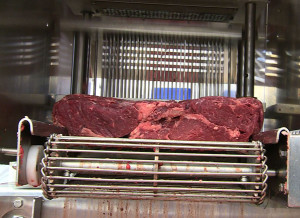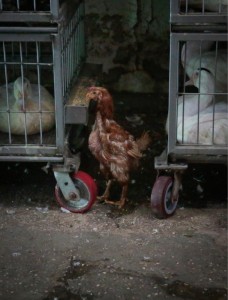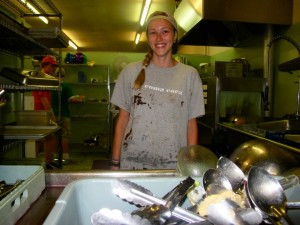Food safety friend of the blog, Luca Bucchini, offers an Italian perspective on the ongoing Hepatitis A outbreaks:
You are responsible for the control of infectious diseases in the Italian Region of Trentino-Alto Adige.
In your position you know that Hepatitis A is a highly infectious disease, due to a small picornavirus RNA, often asymptomatic in children under 5 years, but which causes in older individuals jaundice, fever, weakness, and abdominal  pain. The symptoms last for a week or two, sometimes months. In 15% of cases, the symptoms last more than a year.
pain. The symptoms last for a week or two, sometimes months. In 15% of cases, the symptoms last more than a year.
In adults over 50 years (and in those who have liver problems) the risk of death is important (to 1.8%). It is often transmitted by foods (strawberries, shellfish, etc.), or water, given the resistance of the virus in the environment, via the classic fecal-oral route (which means eating foods which has come in contact with contaminated feces). You also know that an epidemiological difficulty is the long incubation period (28-30 days).
Back to your office. No cases have been reported in 2011 and even in 2012 from the entire Trentino. But, between January and April 2013, reports for 15 cases have come in. May’s not over, and a further 11 cases have been reported. Because you know that for every case reported to your attention, there are may be 10 unreported cases (if you can apply in Italy CDC’s estimate for underreporting of hepatits A http://www.cdc.gov/hepatitis/statistics/2009surveillance/Commentary.htm), the cases could be many more.
So, reasonably you suspect that there is a problem and work to uncover what is making people form Trentino ill with hepatitis A.
You ask the Istituto Superiore di Sanità, Italy’s National Institute of Health, whether the problem concerns Trentino, or also other parts of Italy. A surveillance system, SEIEVA http://www.iss.it/seieva/?lang=1&id=37&tipo=4 collects this type of data. It is not know what the Institute told you, but we can assume that they may have told you that, of the 16 regions (out of 20) that have sent updated data, comparing the period September 2012-April 2013 to the corresponding period one year earlier, cases of Hepatitis A shot to 417 cases (from 167 a year earlier), an increase of 70%.
There is probably a significant ongoing epidemic of hepatitis A in Italy, potentially with hundreds of cases.
Is this an aggressive epidemiological investigation? We do not know what Trentinian and Italian authorities did till May 2013; no action is documented in the report of the European Centre for Disease Control (ECDC) and the European Food Safety Authority (EFSA) http://www.efsa.europa.eu/en/supporting/doc/439e.pdf .
On May 8, however, Germany, through the systems dedicated to these epidemic alerts, reported seven cases of hepatitis A in Germans who had been skiing in Trentino and had probably contracted the virus there in mid-March. Following this report, the Netherlands and Poland also reported similar cases, for a total of 15: after the winter holiday in Trentino, they had returned home and became ill with hepatitis A.
According to the European document, only then Italy took notice of the situation in Trentino and of the 70% increase nationwide.
On May 23, the Ministry of Health finally alerted all regions, asking the notification of cases within 48 hours, instead of the usual and cumbersome passive system.
Is the conclusion that, in order to find out that in Northern Italy there is an outbreak of hepatitis A, Italians need to wait for a few Germans skiing here, get hepatitis A and then seek advice from their own health care system?
The problem is related to lack of resources; also, and there are details that are not known and which may explain delays. But certainly there is also a cultural problem.
The Americans may have reported the news differently. There is a similar ongoing Hepatitis A otubreak in the U.S
(http://www.cdc.gov/hepatitis/Outbreaks/2013/A1b-03-31/index.html ) and they may be connected through a common source for ingredients in frozen berries https://barfblog.com/2013/06/30-sick-hepatitis-a-outbreak-linked-to-frozen-berries-in-us-same-source-as-eu-outbreaks/):
The U.S. Food and Drug Administration and the Centers for Disease Control and Prevention (CDC) and state and local officials are Investigating a multi-state outbreak of Hepatitis A illnesses potentially associated with a frozen food  blend. We are moving quickly to learn as much as possible and prevent additional people from becoming ill. We recognize that people will be concerned about this outbreak, and we will continue to provide updates and advice.
blend. We are moving quickly to learn as much as possible and prevent additional people from becoming ill. We recognize that people will be concerned about this outbreak, and we will continue to provide updates and advice.
The full text is here http://www.fda.gov/Food/RecallsOutbreaksEmergencies/Outbreaks/ucm354698.htm. Let’s focus on the part that in bold.
The urgency is evident: we know that there is a cause (a contaminated food), we must identify it (and have done so already in fact), remove it from the market and tell consumers to throw it away if they have it in their homes, so nobody’s going to get ill anymore. We know that you are worried, but you should know that we are moving at top speed.
Too much adrenaline? It’s the American approach.
Instead let’s hear the Italian bell:
In April 2013 two international outbreaks of Hepatitis A have been reported, the first involving patients in the North-European countries (clusters allegedly linked to the consumption of frozen berries from extra-EU countries), the second of tourists returning from Egypt . In recent months, moreover, a significant increase compared to previous years of cases of hepatitis A in Italy was noted. In light of the increase of cases in our country and of the two epidemics that are involving other European countries, the Ministry of Health has prepared the Circular 23 May 2013 (http://www.trovanorme.salute.gov.it/renderNormsanPdf?anno=0&codLeg=46074&parte=1%20&serie=) to strengthen surveillance of hepatitis A virus and initiate investigations aimed at identifying both the existence of possible autochthonous cases related to the outbreak and, where appropriate, the potential sources of infection.
The Germans warned Italy in early May. On the 23th, Italy is strengthening the surveillance system. We, Italians, wonder if there are “possible” related cases in Italy (which sounds a little like saying that in Trentino they have served contaminated products exclusively to German, Polish and Dutch tourists). If there are really Italian cases related to the outbreaks, we might then ask “where appropriate”, of course, if a cause – potentially – exists. Caution prevails, perhaps resignation or, if you will, a wise detachment.
As the Ecclesiastes say, “the sun rises and the sun goes down” (or, if you will, hepatitis A comes and goes again) “Is there any thing whereof it may be said, See, this is new?”
In short, no urgency, a cause still to be found to prevent diseases, but above all prudence.
Potentially, possibly, maybe, and even if.
In reality, however, there seems to be a point of concern. Authorities know about the suspected foods (frozen berries, known to spread viruses if not fully cooked, and in 2013 this is not new) including lots and brands. Italy has sent an alert about these products to the EU, making clear (https://webgate.ec.europa.eu/rasff-window/portal/index.cfm?event=notificationDetail&NOTIF_REFERENCE=2013.0756): mix frozen berries from Italy, with raw material from Canada, Serbia, Bulgaria and Poland, via Switzerland that is, it may well be a product made in Italy by an Italian company, but it is not our good Italian food. Same goes for the other alert (to use the words of the Ministry, “extra-EU imports”).
As Americans and northern Europeans import contaminated fruit from countries, where agricultural workers have no access to proper sanitation facilities (and thus, for example, collect the fruit with unwashed hands after using the bathroom), and get sometimes sick, now it’s up to us. Stigmatizing extra-EU imports is however in line with the current anti-import attitude.
Probably, however, the ordinary citizen would like to know the brand of the suspected products, so she, while keeping the brand in mind for future purchases, an throw away the product before eating it, and potentially getting sick.
On this point, as it is customary, in a strange game of different actors (blaming an individual official is superficial), the silence is absolute (NB: update June 6th at 13:26. I was informed that the Autonomous Province of Bolzano, on its site http://www.provincia.bz.it/usp/service/321.asp?archiv_action=4&archiv_article_id=427075 – I do not know how often visited by consumers across Italy – reported on May 31 the details of the suspected food. Well done to the Province, but what about the rest of the Italians? ilfattoalimentare reports from that a cheesecake and a third product sold at Coop may be involved http://www.ilfattoalimentare.it/allerta-alimentare-frutti-di-bosco-surgelati-contaminati-da-virus-epatite-a-ritirati-dal-mercato.html).
When you hear that in America or in Germany there is an outbreak with hundreds of people sick, and so you think you have the luxury to get concerned about the theoretical risks of GMOs, do not console yourself thinking that those things do not happen to us Italians. Perhaps media and risk communicators just let you free not to worry about foodborne disease.
PS: it should be clear that I hold in great esteem many officials from the local health authorities, of the Ministry of Health, and of ISS, particulary knowing the conditions in which they have to operate. This article is not addressed to them, the problem is political and cultural.
 Monitoring System’s (NARMS) report.
Monitoring System’s (NARMS) report. speak positively for those raising our food.
speak positively for those raising our food.














